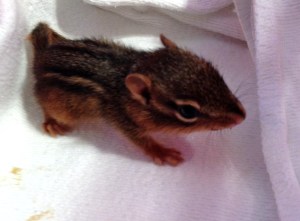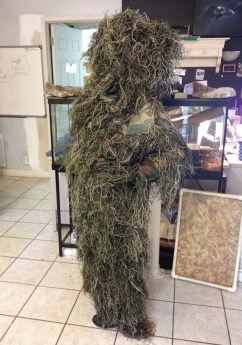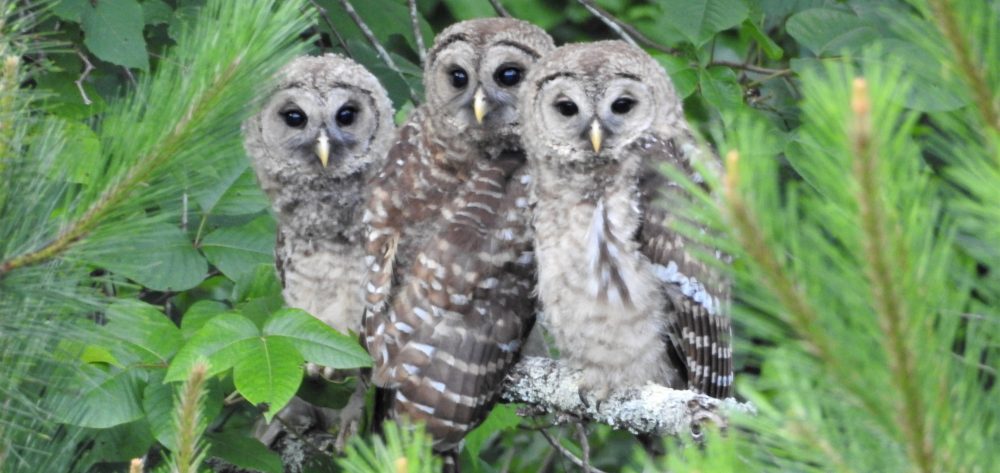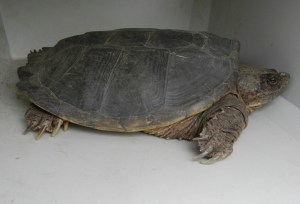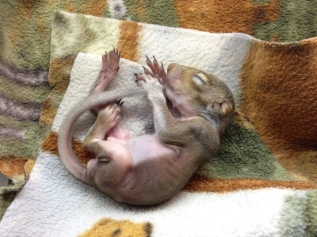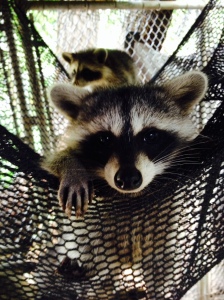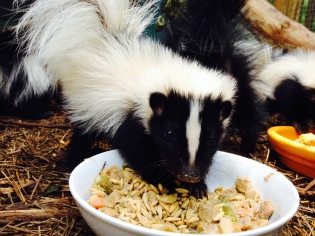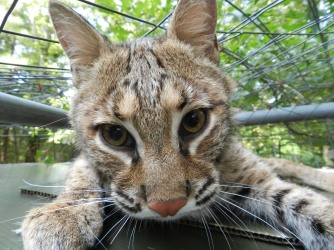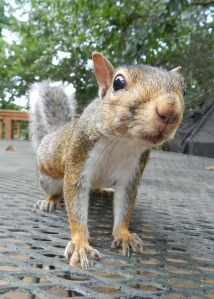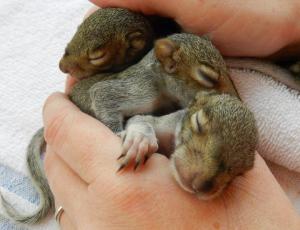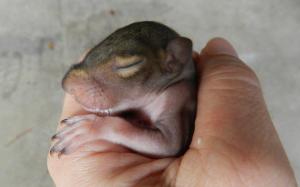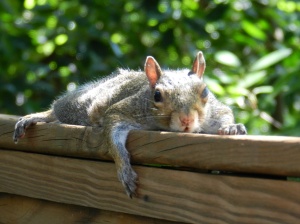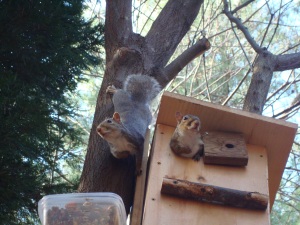Although Old Man Winter is still flexing his muscles here and there (Atlanta expects temperatures to drop below freezing again this week, and my northern friends are bracing for another snowstorm), we are definitely on the threshold of spring. With the arrival of warmer weather and lengthening days, the signs of spring are everywhere – blooming spring ephemerals, budding trees, birdsong, and baby squirrels! Here are just a few of the tell-tale signs I’ve seen in recent days that remind me that warmer, greener days are ahead.

Trout Lilies are an early herald of spring.
One of the earliest heralds of spring, Trout Lilies grow in sizeable colonies and are named for the mottled leaves which bear some similarity to the markings of brook trout. Like other spring ephemeral wildflowers, trout lilies are perennial woodland plants that sprout early in the spring to take advantage of the full sunlight. They bloom and quickly turn to seed before they are shaded out by the canopy trees. Once the forest floor is in deep shade, the leaves wither, leaving behind only the underground roots and bulb. Some other ephemerals to look for while walking in Eastern woods are Hepatica, Bloodroot, Trillium, and Jack-in-the-Pulpit.
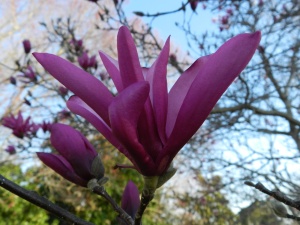
Magnolia blossom
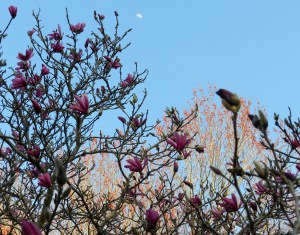
Magnolia tree with maples and the moon in the background
Although we usually think of trees being their most colorful in the fall, they put on a variety of colorful displays in the spring, too. Aside from the showy blooms of flowering trees like the Dogwood or Magnolia, many other common deciduous trees bear colorful flowers in spring. Maple flowers, for example, can be green, yellow, orange, or red, and while the flowers are small, the effect of a whole tree in bloom is beautiful. Later, the flowers of the maple tree yield seeds called samaras – better known as “helicopters” or “whirlybirds” for the way they are shaped to spin as they fall, which helps to carry them great distances on the wind for dispersal. These seeds are an important food source for a variety of wildlife.
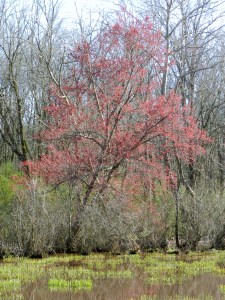
Maple tree in bloom
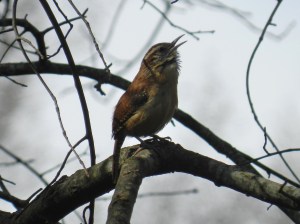
The birds are singing! (Carolina Wren)
You’ve probably noticed that the birds are a lot more vocal as the days grow longer. The increased sunlight triggers hormones in birds that induce them to sing, especially the males, but the females of many species sing also. Vocalizations fall into two general categories, songs and calls. Songs are used to attract mates, declare territory, and bond with family members. The shorter calls are used to convey information about food sources, warn of danger, and help family members stay in touch as they forage. The Northern Mockingbird, named for its ability to mimic the songs of other birds, has one of the most expansive repertoires, copying songs from other species and incorporating them into thousands of variations. Most people are surprised to learn that Georgia’s state bird, the Brown Thrasher, has even more songs than the mockingbird! In fact, it has the largest repertoire of all North American birds. Early spring is one of the best times to watch birds – before the canopy hides them from view and before they have young mouths to feed and protect.

Northern Mockingbirds are expert mimics with hundreds, if not thousands, of variations in their songs (even when standing on one foot as this bird is, ha ha).
Finally, I know that spring is truly here when the wildlife center where I volunteer starts receiving a steady inflow of displaced and orphaned baby squirrels and other young wild animals. Already we are caring for close to twenty tiny squirrels, and that number will double, or triple as the season progresses. For me, making and warming formula, feeding bottles, and washing an endless stream of dishes and dirty laundry have become as closely associated with spring as any other of the tell-tale signs. So please, hold off on your tree pruning, keep your cats indoors, and when possible, place any young mammals or birds you find on the ground back in the nest. Our hands are full already!
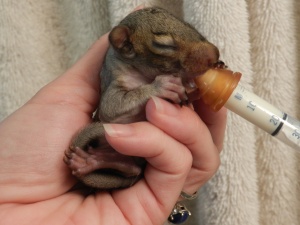
Baby squirrels require numerous feedings each day. This one is about two weeks old.
To learn more about rehabilitating baby squirrels and see some adorable photos, see my earlier post Nutty for Squirrels, mefurr.wordpress.com/2013/09/26/nutty-for-squirrels/. For information about what to do if you find an injured or orphaned animal, check out AWARE’s website at www.awarewildife.org.
To learn about the birds in your neighborhood, including audio files of their songs and calls, one of my favorite resources is www.allaboutbirds.org, a website of the Cornell Lab of Ornithology.
A great resource for information on wildflowers and trees, as well as many different types of animals is www.enature.com/fieldguides/. This site allows you to type in your zip code to find out more about the plants and animals in your neighborhood.
